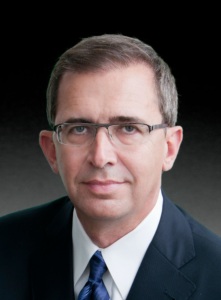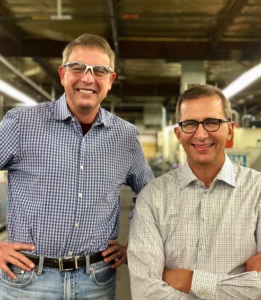
An In-Depth Guide to Selling a Manufacturing Business (+ Info on Navigating New Tariffs)
In-depth guide to selling your manufacturing business—from valuation and exit prep to negotiation. Plus, how new tariffs may impact your company’s valuation.
Business Owners, Private Equity
Private equity experts and their backers are increasingly turning to the “independent sponsor” model to get their deals done. We sat down with John Hill of JW Hill Capital, an independent sponsor based in Newport Beach, CA, to learn more about their model. JW Hill acquires lower middle market companies in manufacturing, value-added distribution, and industrial services. John and his partner each spent 25 years in industry running businesses, and private equity is their second career.

Hill: In addition to Axial, we have developed a network of intermediaries whose focus aligns with our investment criteria. We see many sell-side deals, but because of our industry focus and operations expertise, we often are introduced to potential off-market or proprietary deals. And we’re always happy to pay a buy-side fee for deals we close based on such introductions. Beyond the intermediary network, we also source deals through our network of industry contacts, trusted advisors, and industry executives or operators.
As an example, we recently acquired Bandy Manufacturing, a manufacturer of aerospace hinges, from GKN Aerospace. They were running a limited sell-side process, and they approached us because of our experience in the sector. A number of groups participated in the management meeting, and we were fortunate to be selected based on our operating/industry background and track record in growing businesses.
The independent sponsor model is a great fit for us. Unlike the traditional firm with committed capital, we source our capital on a deal-by-deal basis. The traditional sponsor first obtains binding investment commitments before sourcing and closing deals. The approach that an independent sponsor takes is really the inverse of the traditional ‘blind pool’ model. We focus first on sourcing quality deals, negotiating the buy-out, and performing preliminary diligence. We then develop the investment thesis, put together a capital structure that makes sense for that particular deal, and select the right combination of debt and equity partners.

In today’s competitive market a successful buyer needs to be highly differentiated. That’s especially true for an independent sponsor–particularly a newer one–who otherwise may find themselves at a disadvantage when competing with a traditional sponsor with a committed fund.
As a result, we see a trend towards increasing specialization, which helps with deal sourcing as well as with diligence and value creation. Our specialty is our operating expertise, industry experience and track record of transitioning founder-led organizations to sustainable, growing businesses. That often appeals to sellers who value legacy and are looking for a growth partner.
As to the question of whether we see this changing over time, we have seen a favorable shift in the acceptance of our credibility as a buyer. I attribute that to two factors. First of all, the population of successful independent sponsors is growing, and the general acceptance of the model in the M&A community seems to be tracking that growth. Secondly, our success in closing deals has helped legitimize us in the eyes of many deal sources—particularly boutique investment banks or brokers who run a targeted process and whose specialty aligns well with our investment criteria and operations-centric approach.
The traditional committed fund model is a proven model and has been successful for many years—and will continue to be so. But for us, the independent sponsor model offers several advantages. First of all, we have a flexible mandate. That allows us to really focus on finding deals that are a great fit for us, on a schedule that makes sense. We’re not on a clock to deploy capital.
Another advantage is capital structure flexibility. That gives us the freedom to put together the right structure, economics, hold period, and investor composition for each deal. And our investors like that as well. It gives them deal transparency and optionality—they can look at our deals on a “take-or-pass” basis. And this deal transparency is a good thing–deal quality is self-policing and must stand on its own merit. And lastly, it also gives them access to the less efficient lower-middle market where we focus.
Another independent sponsor recently characterized the model as the ‘wild-west of private equity.’ And there’s some truth to that. But I also see it as an opportunity to combine the rigor of traditional private equity model with the advantages of deal-by-deal investment and economics.
The number of capital sources seeking independent sponsors deal is growing. In addition to the traditional senior and sub-debt lenders, we’re seeing more firms wanting to fund most or all of the junior capital—both debt and equity. And then there are the direct investors—groups or individuals that would be potential limited partners (LP’s) in traditional firms. This class of investors is showing more interest in direct investments with independent sponsors.
We rely on the network of service providers and partners we have developed to source and execute deals. Instead of having a full-time in-house team, we operate a bit more virtually—pulling together the necessary resources on a deal-by-deal basis.
Axial has been a good tool for establishing relationships. While we have not yet transacted a deal we sourced on Axial, we do rely on it for making connections and of course looking at deals. As a small firm, we rely on technology to originate deals, manage relationships, track our acquisition projects, and stay abreast of the performance of our portfolio companies.
Divestitures can be good fits for us and our model. We like the fact that seller is typically highly committed and capable. Due diligence is typically more streamlined because of the quality and availability of data. And carve-outs coming out of large corporations usually have good financials systems—not the norm for the lower middle market.
We also like family-owned businesses that are looking for liquidity and a growth partner. A lower-middle market family-owned business bringing in its first institutional capital typical offers us numerous opportunities to create long-term value and professionalize the business. This can include leadership/organization development, system/process deployment, and the creation and execution of an attractive growth strategy. All of which results in a robust and growing business with a healthy culture where employees can thrive for years to come.
